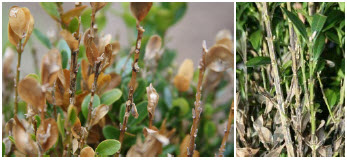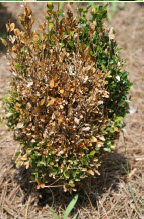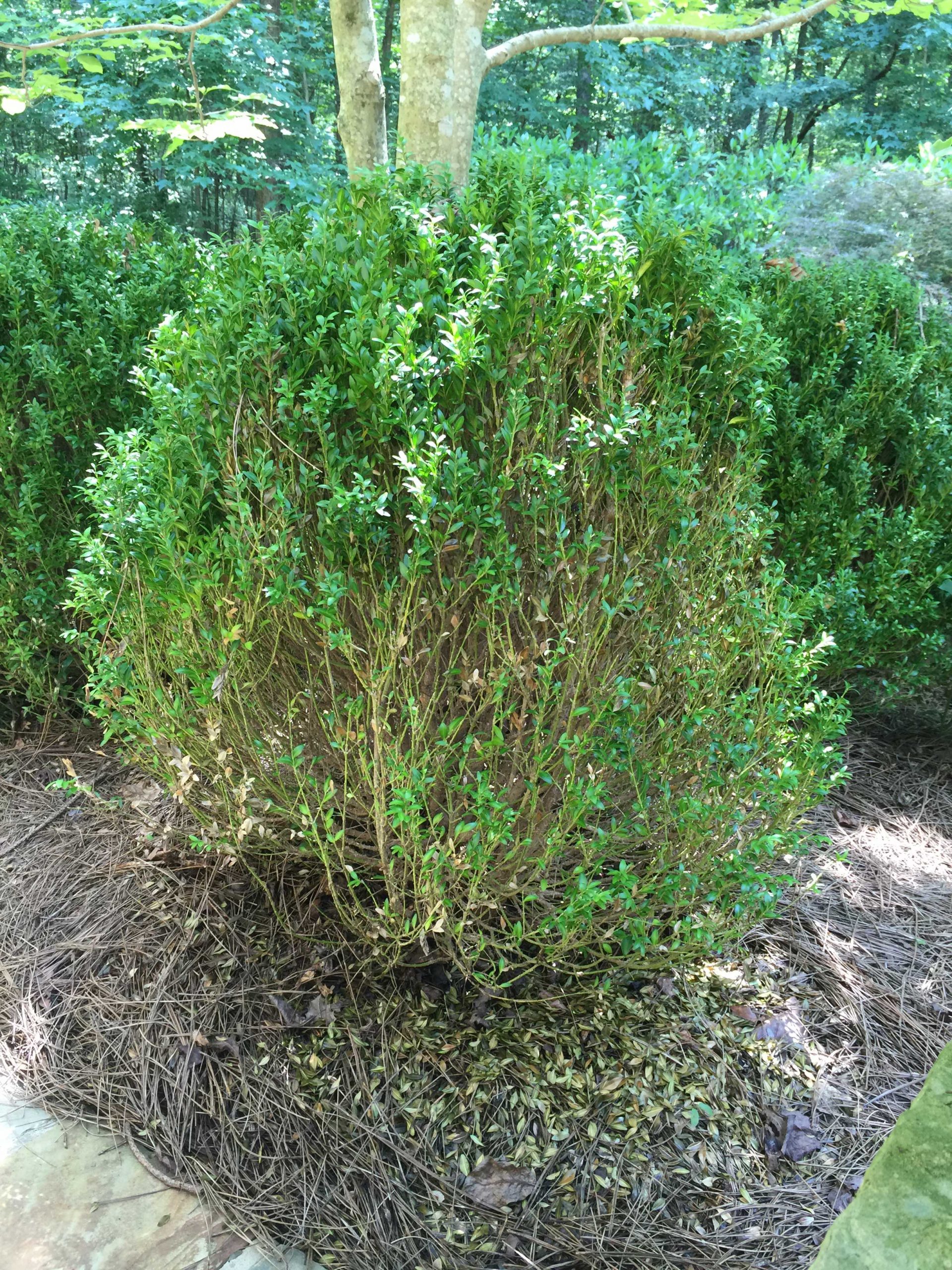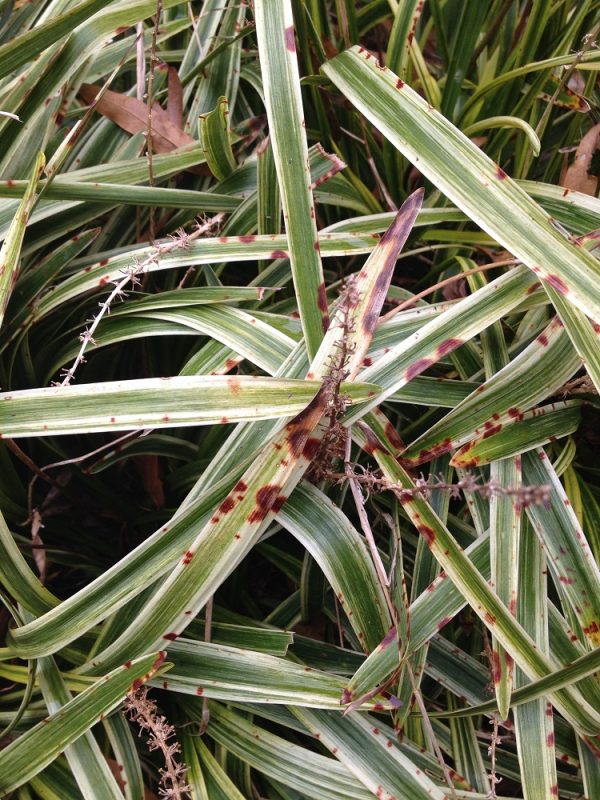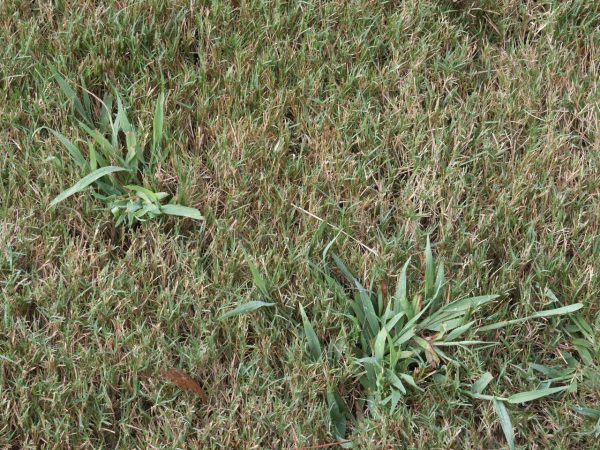Boxwood Blight – Major Concerns in Landscape
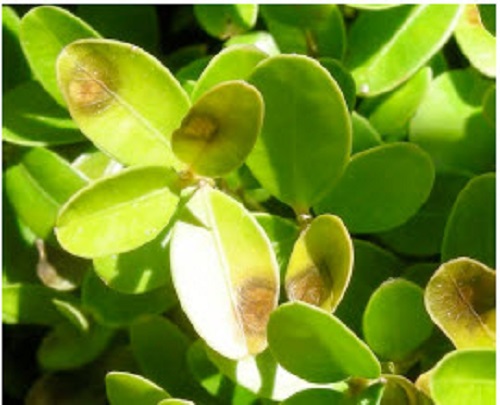
Q: We live in Colquitt County and my wife wants an elaborate parterre garden utilizing approximately 700 dwarf boxwoods. She would like the hedges to be able to be maintained around 2 1/2 feet high. The area receives a great deal of sun particularly from late morning through the afternoon.
I am concerned about boxwood blight. We have asked many local landscape companies but they are not sure. Most say they just use a Japanese variety or ‘Winter Gem’ but when questioned about these and our requirements they shy away. Please help us pick an appropriate variety of boxwood as I do not wish to make a 700 plant mistake.
A: I’m not an expert on boxwood blight but UGA’s Dr. Jean Williams-Woodward is. Here’s what I learned:
In regard to the question about establishing a new parterre garden with 700 boxwoods, my answer is very conservative. Japanese and Korean boxwoods are less susceptible to boxwood blight in general; however, they can still get the disease. I have seen gardens where Korean boxwood was killed by boxwood blight. It all depends upon the presence of the disease and the environment. Boxwood blight once introduced into a garden will spread rapidly under cooler, wet conditions (predominately fall through spring in GA, particularly in Moultrie). To be honest, I just can’t recommend planting boxwood at this time. Nurseries within many boxwood growing areas (MC, VA, OR) are struggling with this disease. Plants propagated and grown in GA have a reduced chance of being infected. In areas where boxwood blight is present, I can only recommend planting Japanese holly as a replacement plant.
If you proceed with boxwood, use a Japanese or Korean variety as they are less likely to show symptoms and leaf loss even when infected. Try to purchase plants from a GA nursery that is participating in the Boxwood Blight Compliance Agreement. Restrict use of tools/pruners/hedgers to those held on-site. The disease has been spread by landscapers moving between gardens and using contaminated tools to maintain the plants. In some gardens, household pets (dogs and cats) have been implicated in aiding the spread of the disease because the spores and infected leaves stick to their hair as they weave between plants. Do not irrigate boxwoods after establishment. This can lead to root rot disease, as well as an increase in boxwood blight because of wetting foliage and increasing humidity around the plants. A preventative spray program that includes fludioxonil and chlorothalonil-containing products can help when applied in late summer into fall and from April to June. This time period coincides with moderate temperatures and usually wetter conditions.
see Alternatives to boxwoods

